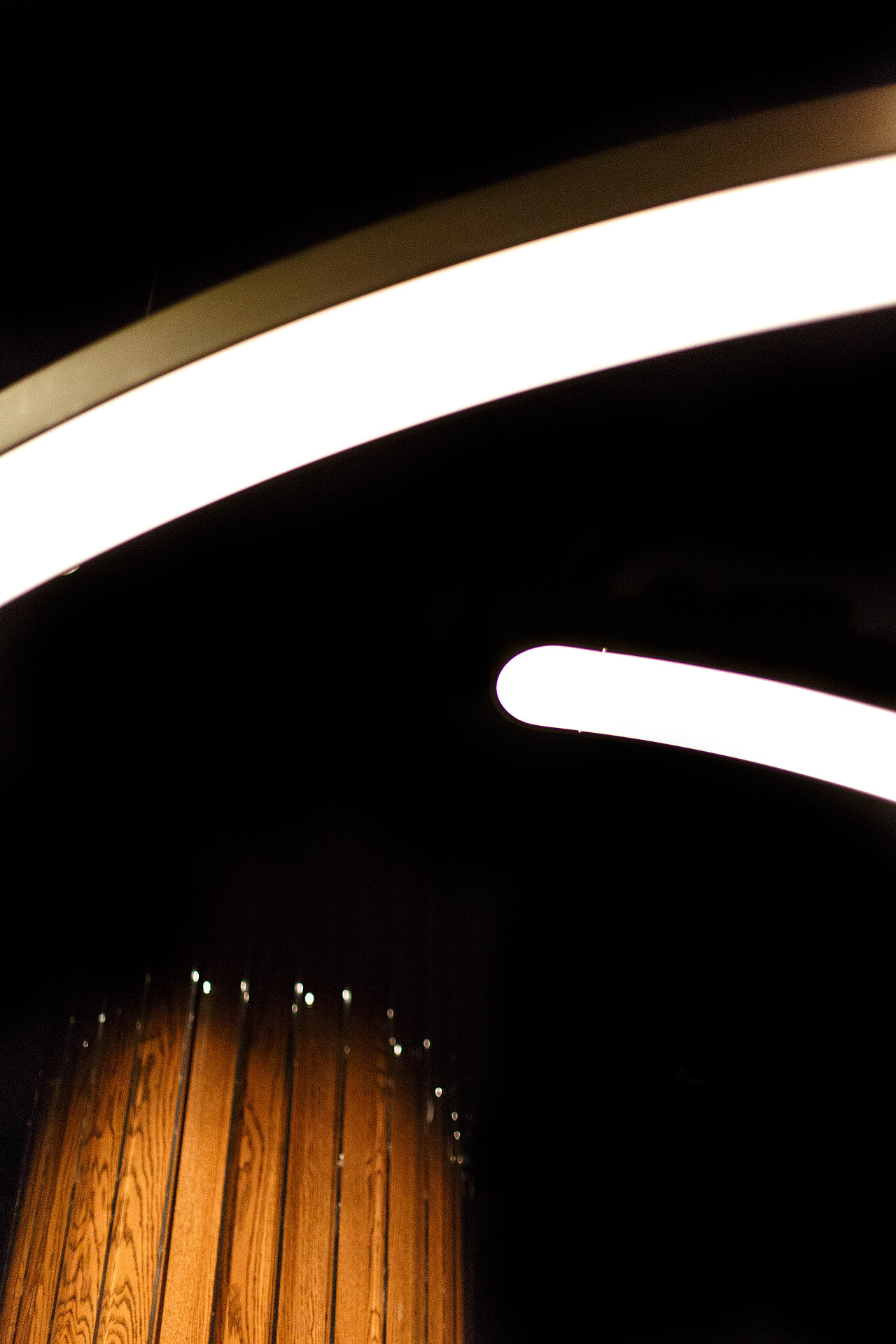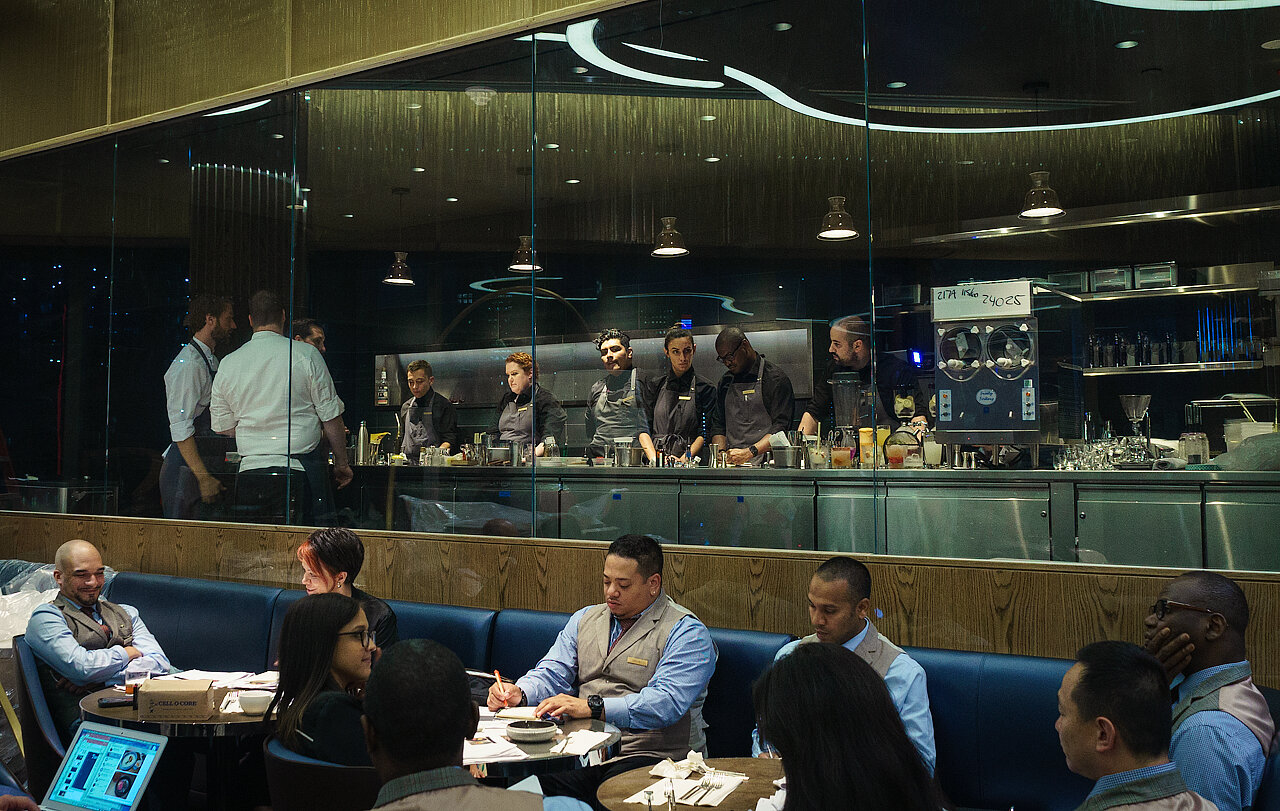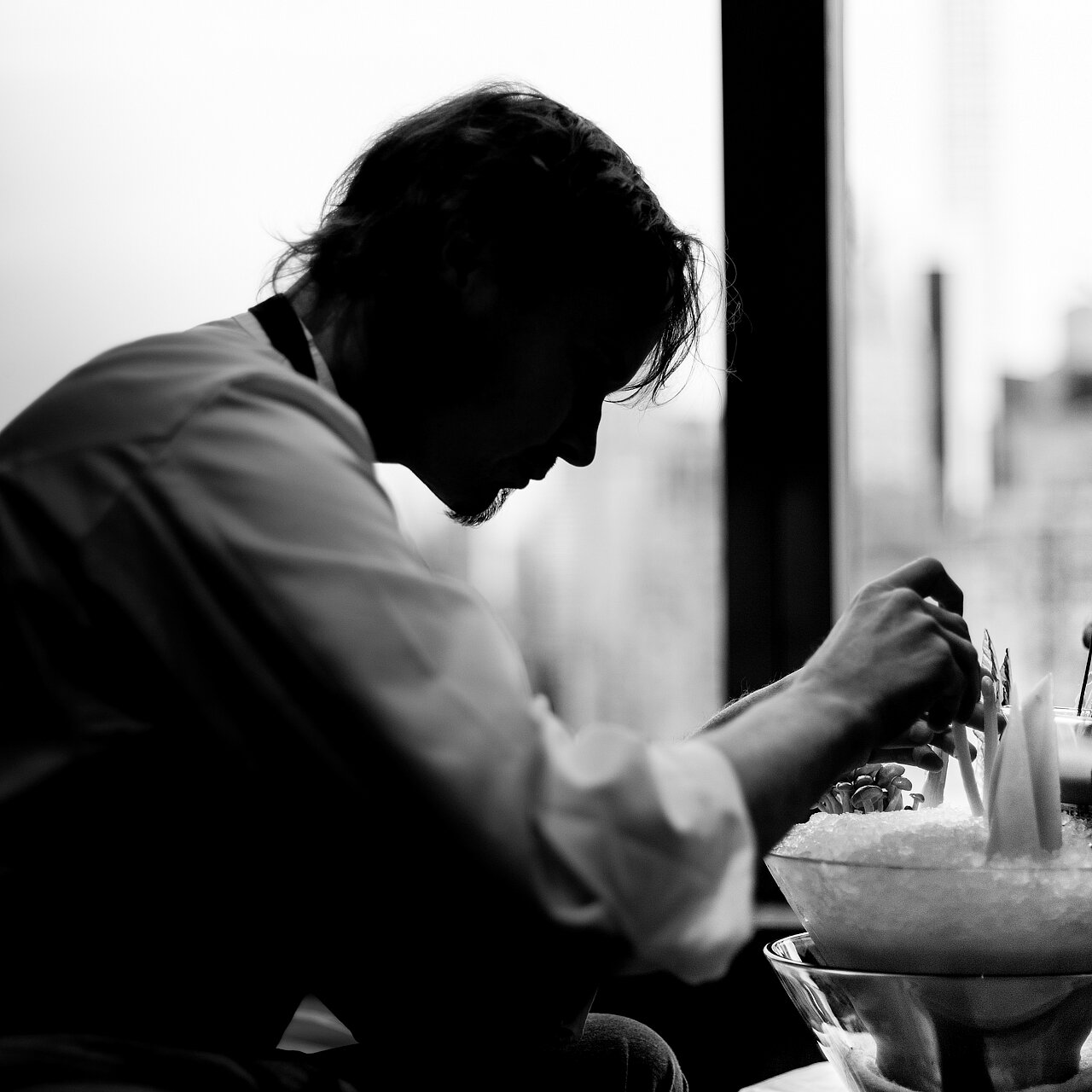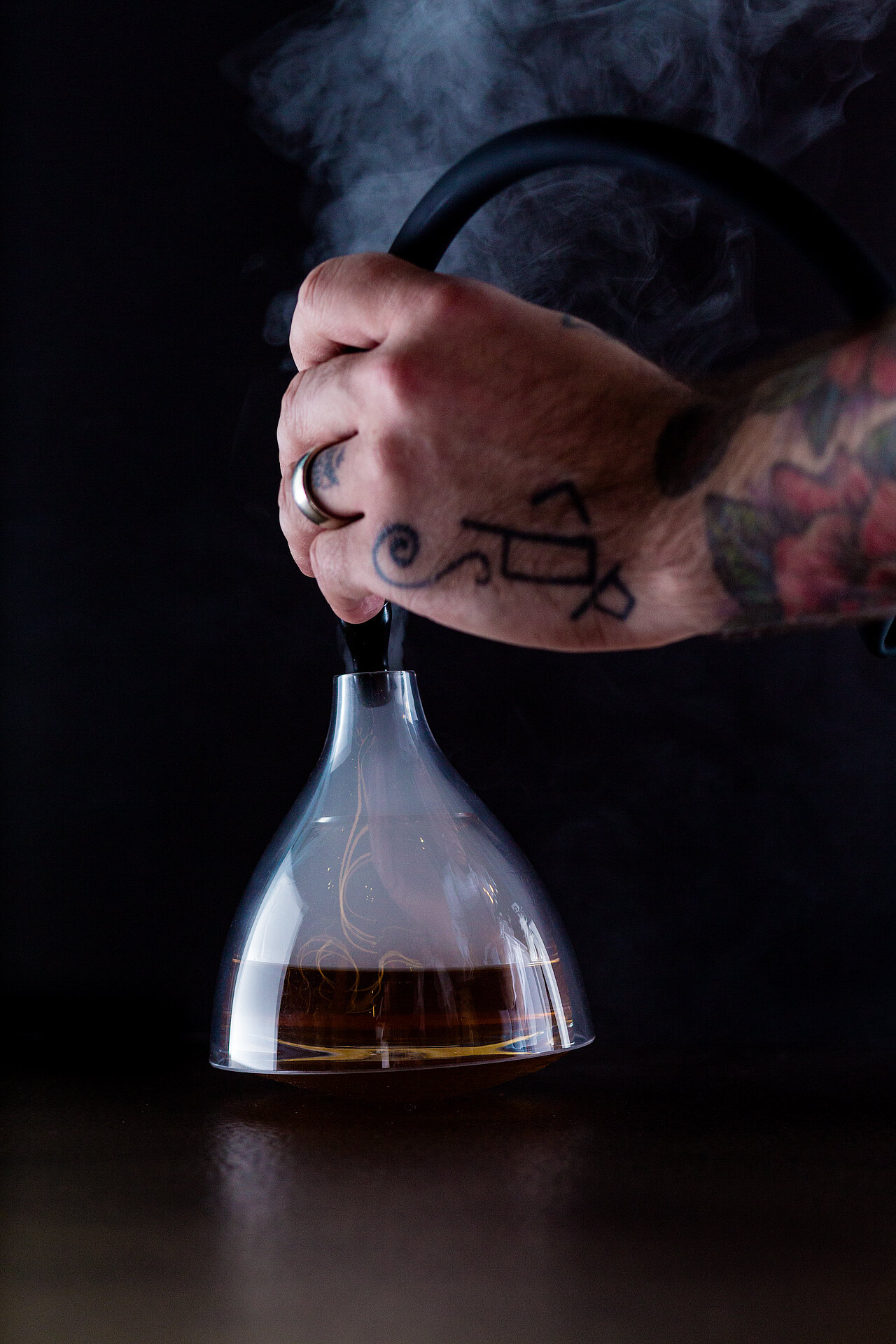Aviary NYC
Hello friends;
We’re just nearing the completion of about 40 different recipes, which, given that we’re aiming for roughly 100 total recipes, puts us a bit shy of being halfway done with this part. Photography is mostly complete for those as well, though I still have some image processing stuff to work through, and we’re constantly circling back to re-evaluate how everything looks in context (doing reshoots as necessary if things start looking too monotonous).
Included in our most recent round of recipes is what we’re calling a “cluster” recipe. Many of the Aviary’s cocktails are completely unique in terms of recipe structure, but in poring through the entire catalog of recipes for this book, we noticed many of them share a single fundamental technique. In The Rocks, for example, is a relatively simple idea: a classic cocktail served inside a sphere of ice. The kitchen periodically swaps out the classic cocktail contained inside the sphere – sometimes it’s an Old Fashioned, sometimes a Manhattan, etc. – but the overall technique is the same for all. Presenting, say, six standalone recipes for variations of In The Rocks would result in a lot of visual and informational redundancy, which would get boring. We could, of course, choose to just pick one… but that’s not all the way awesome, now is it?
So, we’ve flagged recipes like this with the intention of treating them differently from a photographic and design standpoint. Doing this requires a fair bit of planning (we want each cluster to look and feel unique), but the payoff is that we knock out 5-6 recipes all in one go. Sarah develops multiple designs, with illustrations (“storyboards”, to draw some lessons we’ve learned from working for years in the film world) to guide my photography, then I shoot stand-in photos for her to prototype with.
I have an itch to elaborate about our photography the way we recently discussed layout and design, but the past month has presented a unique opportunity that I feel might be worth sharing. That opportunity is the opening of a second location of the Aviary in New York City.
Sarah and I have experienced a handful of menu transitions at Next (for those to whom this is unfamiliar: Next is another of Chef Achatz’s restaurants, adjacent to the Aviary. It shapeshifts into an entirely different restaurant every 4 months; recent menus include “Hollywood”, “Ancient Rome”, and currently “World’s 50 Best Restaurants”). But this is our first exposure to an entirely new launch of a dining establishment. Last week, Sarah and I traveled to New York to document the final days of preparation before the bar opens for its first service.
Our time was spent moving between the Aviary kitchens and the space that will ultimately be the dining room. Similar to the ‘cage’ that separates the bar from the dining room here in Chicago, Aviary NYC features a large glass wall that allows guests to view the bar from their seat (along with a rather spectacular sweeping view of Central Park). From these vantages, we got to see the front- and back-of-house staff rehearsing and practicing their respective specialties.
In the kitchen, Chef Micah works with the Aviary NYC chefs and bartenders to rehearse the various drinks that will appear on the inaugural menu (many of which are entirely new and specific to the New York location). At the head of the bar (farthest from me, in the below photo), standing at what we call “the pass”, is the Aviary’s equivalent of an air traffic controller: the Expediter (or “expo”). The expo is the liaison between the front of house and kitchen. When a guest arrives and is seated, the expo is notified, and the time is noted. From this point on, the expo has an awareness of everything about every event at that table (and all other tables): what time the last drink or food was served, how long the guest has been eating/drinking their current course, or how long each guest has been waiting for their next course. As drinks move from the kitchen to the guest, the expo checks every single one to ensure it has been made correctly and excellently (no drips on the glass, garnishes are bright and fresh, etc.). The expo is also made aware of any dietary concerns of every table, and ensures any drink going out to a table adheres to these concerns.
The expo is also in charge of distributing information to the bartenders and chefs. In contrast to the way a typical bar works, each bartender at the Aviary is assigned to a single station. Each station is responsible for a subset of all drinks on the menu. As orders come in, the expo calls them to the various stations. The stations are trained to call the order back to the expo, to acknowledge they have heard the order and begun its preparation (the expo, then, is monitoring the status of all the bartenders to understand if any delays need to be anticipated).
While Sarah and I are there, the team is running hypothetical tickets, to simulate saturating the bar with orders. The bartenders spring to work, assembling the various orders that they’ve received and presenting them back to the expo. The whole kitchen then pauses to evaluate everyone’s work. This part is particularly fascinating to Sarah and I, as it’s in these evaluative moments that the bulk of the nuance of each drink (and, therefore, each recipe) is explained.
While the knowledge to be gained here is intensely awesome to witness, it’s also super-intimidating to Sarah and I, mostly because it underscores various gaps of missing information we realize we have in our recipes. These insights are passed along just as we’re experiencing: in the moment, by word-of-mouth from an expert. We try to frantically document as much as we can, but some things are just so perplexing we’re still wrapping our heads around how to handle them. One chef, for example, takes a moment to explain that he has multiple ways to shake a cocktail tin, depending on what he’s trying to do. He demonstrates each shake carefully, and Sarah and I exchange glances at each other as we wonder how we can possibly distill the subtle differences in his movement into a book.
As the drinks are honed to the point that they closely-resemble their final form, the kitchen staff brings several servings out to the dining room and presents them to the front of house. Here, the front of house are learning about the art of hosting a guest. Most of these staff members have not visited the Aviary here in Chicago, so the experience of rapidly learning a massive battery of new dishes, ingredients and preparations is a disorienting and intense one.
The kitchen chefs patiently explain each drink: how to properly say its name, the backstory of the drink, its ingredients, any serving instructions, etc. Then the front of house studiously sip the drink and begin to discuss it amongst themselves. They are led by John Schafer, formerly the General Manager of Alinea, who has relocated to New York specifically for this purpose. John is, simply, insanely brilliant at the art of effortless grace.
“Who wants to talk about this drink first?” he asks the group of staff members.
“I will,” one volunteers. He pauses, then begins, “This drink contains flavors of anise and blackberry,” he begins.
“Stop,” John quickly says. “That’s boring. Describing something by just reciting its ingredients is boring. Tell me what you thought when you first tasted it.”
The staff member pauses to consider, then, “Well, I thought it was great! The ice is fun to chew, that’s the bit I like the most.”
“Awesome!” John exclaims. “Talk more about that! Share that with the guest, talk about what you find exciting or interesting about it, or what questions you had when you first tasted it, or what flavor was most striking to you.”
As the bar staff is training, Chef Perretta is working with Chef Achatz to train up a completely different kitchen on the food that will be available at the Aviary. The kitchen staff is similarly rehearsing, and periodically present the front of house staff with servings of each dish on the menu.
“Who wants to talk about this dish?” John asks after Chef Perretta presents the staff with a dozen tiny bites that look like small candy bars.
“I’ll go this time,” another staffmember volunteers. “This one tastes like pumpkin pie to me.”
“Great,” remarks John. “What makes pumpkin pie taste like pumpkin pie?”
A few staff members volunteer their knowledge of the constituent spices in pumpkin pie. “What do we call these spices?” John asks.
Silence.
“What other things use similar spices?” John prods.
“It reminds me of, like, carrot cake or gingerbread or something,” a staff member wagers hesitantly.
“Awesome, yup, so maybe we refer to them as baking spices?” John suggests. “What else? What time of year does this remind you of?”
“Fall,” someone remarks.
“Exactly, so maybe we can also call them autumn spices or fall spices? Has anyone here had mulled wine? Maybe we can call them mulling spices? We want to have multiple ways to refer to any given thing, so that we don’t reuse the same words over and over during service. Find different ways to talk about the same thing to avoid being repetitive and to keep your conversation with a guest feeling fresh.”
The insistence on authenticity (and the recognition of its value to the guest experience) is one of my favorite things about working here, and it’s both refreshing and endlessly surprising to find the many ways this percolates through the veins of this restaurant group. It’s also the thing that gives Sarah and I the confidence to share updates in our own voices (rather than using some stuffy ‘customer service’ formality). It’s a scary thing, and one we’re still finding our footing with. One of the most involved issues for us in creating this book, for example, has been learning how to do it while at the same time learning to be new parents (you may have spotted our fresh little kiddo in the original video for this campaign). This has affected the decisions we’ve made in a very real and much larger way than picking a page size has, and talking openly about that is a thing that’s very interesting to us. We’re still working up the nerve to try that though.
In any case, if you happen to be in or around New York (specifically, in the lobby of the Mandarin Oriental Hotel, on the 35th floor of the Time-Warner building, in Columbus Circle), stop by to say hello to the team and see what they’re up to.
Until next time;
–a












